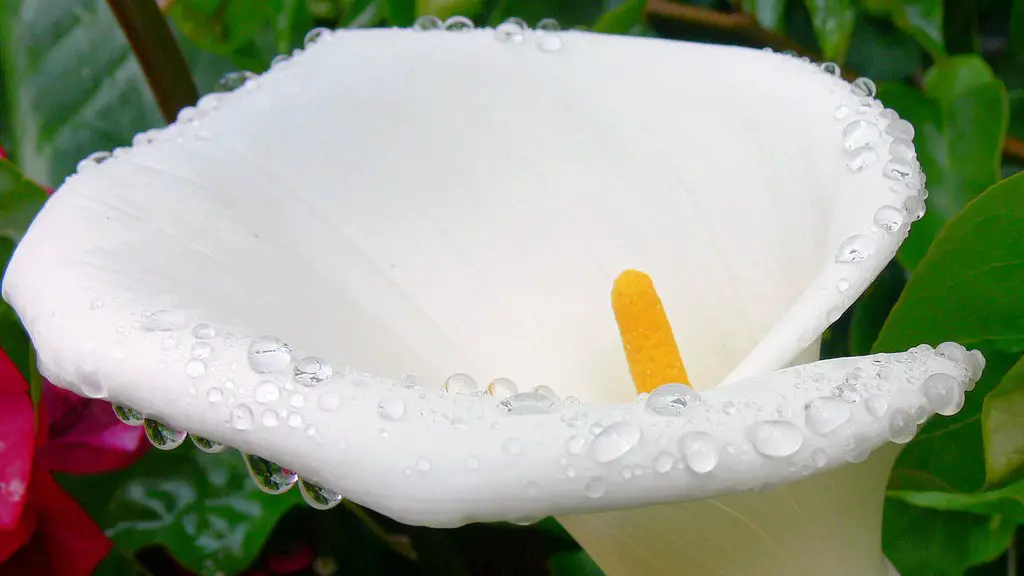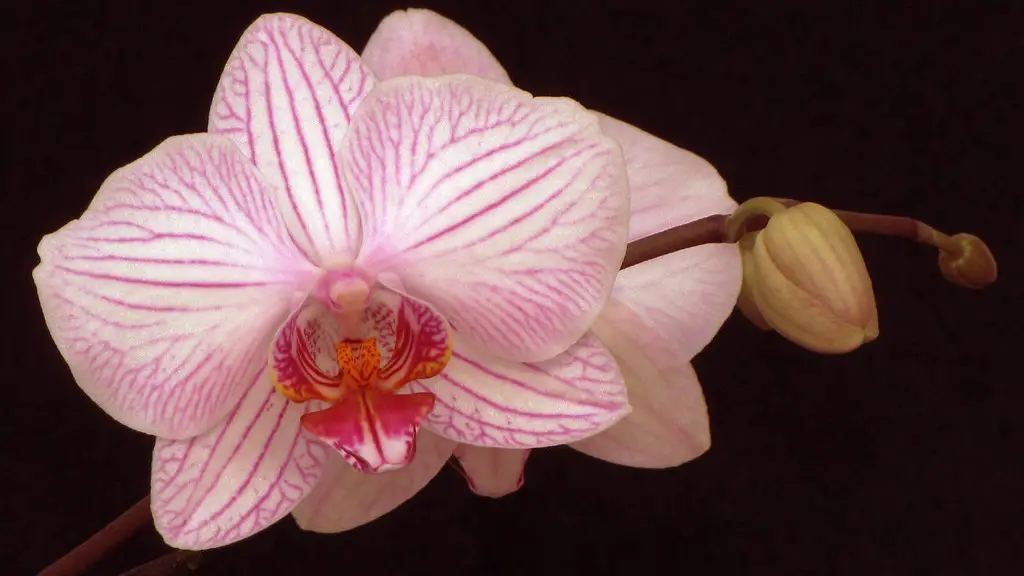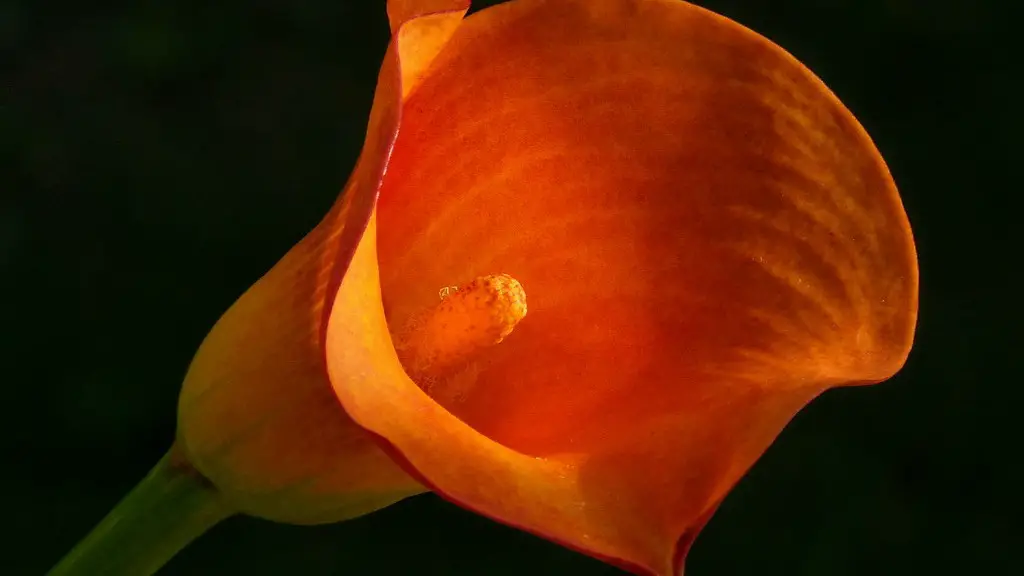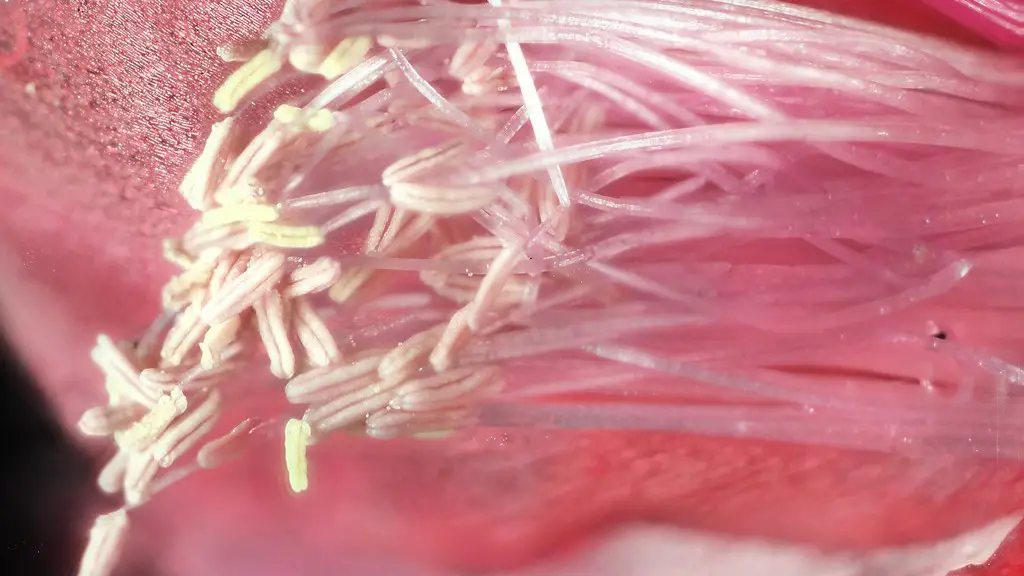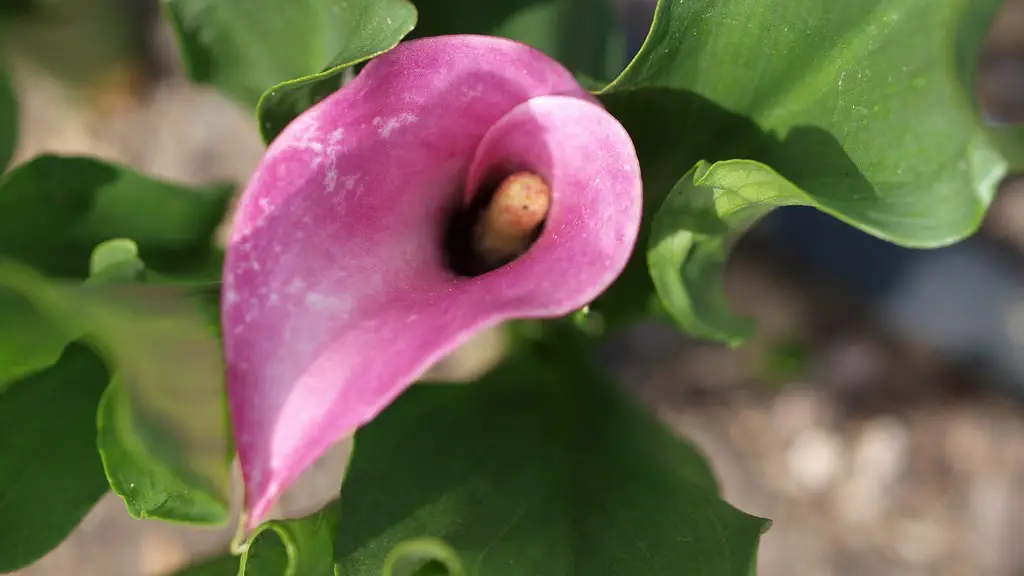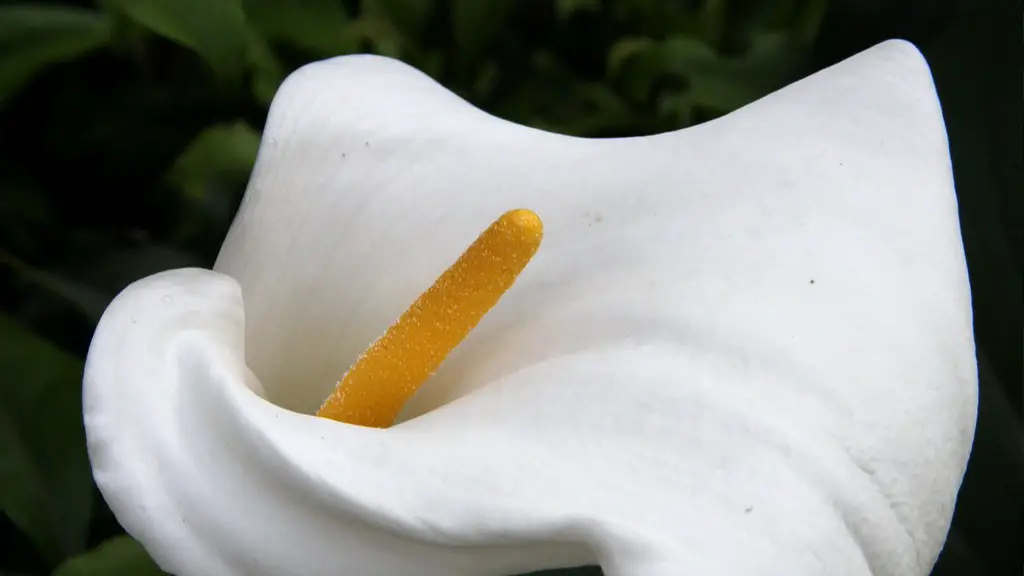We all know that lilies are one of the most beautiful flowers. But, lilies also can be one of the most finicky flowers to take care of. If you don’t have the right information, your lily will quickly turn from a beautiful flower to a droopy, sad-looking mess. In this article, we will teach you how to take care of your droopy calla lily so that it can thrive and look its best.
If your calla lily is looking a little droopy, it may just need a little more water. Make sure to check the soil before watering to see if it is dry. The best way to water a calla lily is to soak the entire pot in a sink or bucket of water for a few minutes.
Why are my calla lily drooping?
If you find your calla lilies sitting in puddles or with mushrooms growing beside them, it’s likely that the soil is compacted and draining poorly. This can cause limp stems and root rot, so it’s important to make sure that your lilies have well-drained soil. You can improve drainage by aerating the soil and adding organic matter to it. If you live in an area with a lot of rainfall, you may also need to take steps to protect your lilies from too much water.
If your calla lilies are drooping, it is best to only trim them if they are unsalvageable. This is because if they are not getting enough water, cutting them will not help. Instead, simply give them a little bit of water, and within a few hours they will be vibrant and lovely once more.
Why is my calla lily drooping even after watering
If you notice your calla lily drooping, it may be due to a fungus known as root rot. This fungus sets in when the soil is too moist or the air around the plant is too warm. The fungus will first attack the rhizome, which will then spread and weaken the whole plant. If you notice any signs of root rot, it is important to take action immediately in order to save your plant.
If you want your calla lily plant to bloom again, you need to follow a specific process. First, the foliage will die back and the plant will appear to be dead. Place it in a cool (not cold) dark place for two months. After this, bring it back out into the light and resume watering it. The foliage will regrow and you calla lily plant will start to bloom shortly thereafter.
How often should I water a calla lily?
Watering your calla lilies too heavily can lead to a number of problems, including root rot and fungal diseases. Once the rhizomes are established, watering once a week should be sufficient. during hot or drought conditions, you may need to water more frequently.
Calla lily plants need well-drained soil to prevent the roots from rotting. The plant will also contract other diseases if the roots are constantly soaked in water. too much moisture will also cause the leaves to wither.
How do you keep calla lilies alive indoors?
If you want your indoor calla lily to thrive, provide it with moist (but not soggy) soil, bright indirect light, and monthly liquid fertilizer while it is in flower. Keep it away from heating and A/C vents, and reduce watering when the plant enters dormancy (November). Cut the leaves off at soil level once they’ve died.
To ensure that your calla lilies stay fresh for as long as possible, follow these care tips:
-Handle the flowers gently, as their delicate blooms can easily bruise.
-Cut the stems at an angle and place them in a vase filled with fresh, clean water.
-Change the water every few days and recut the stems if necessary.
-Keep the flowers away from direct sunlight and drafts.
With proper care, your calla lilies should stay fresh for 7 to 10 days. Enjoy their beauty while they lasts!
How long do potted calla lilies last
The plant usually blooms for about six weeks during the late spring and early summer but may bloom at any time when indoors. Keeping the plant root bound encourages more flowers.
Bamboo stakes make great supports for taller plants because they can be easily inserted into the ground. Make sure to tie the stem of the plant to the stake loosely in a figure eight pattern so that the plant does not get damaged. For smaller plants, you can purchase metal supports that will do the same job.
Should I lift calla lilies?
A good way to overwinter your calla lily is to pot it up in a well-drained potting mix. Place the pot in a cool, dark location with a temperature between 50-60 degrees Fahrenheit. Water the plant when the potting mix dries out, but don’t let it sit in water. Apply a balanced fertilizer once a month.
Calla lily rhizomes are lifted in fall after the first frost kills back the foliage, stored for winter, and then replanted in spring after soil temperatures warm up.
Do calla lilies like sun or shade
In warmer climates, calla lilies grow best in full sun or partial shade. In cooler areas, they prefer full sun. Calla lilies are winter hardy in zones 8-10. In colder areas, they can either be grown as annuals or can be dug up in the fall and stored indoors for replanting the next spring.
When a calla lily flower begins to die, it will roll up into a tube and often turn green on the outside. These spent blossoms are done and have no purpose, so you should clip them off.
Do calla lilies survive in pots?
Calla lilies are a beautiful addition to any home, and their pots should be just as stylish! Pots for calla lilies should be at least 10 to 12 inches (25-31 cm) in diameter and well-draining. While calla lilies need consistently moist soil, improper drainage can cause rots and fungal diseases. The planting medium should also retain moisture but not stay too soggy.
The Calla Lily is a beautiful plant that can add a touch of elegance to any indoor setting. Although it is technically an outdoor plant, the Calla Lily will do just fine when grown indoors. With proper care, the Calla Lily can thrive indoors and provide you with beautiful blooms for many years to come.
Do indoor calla lilies go dormant
Calla lilies will not bloom unless they go dormant after blooming. If you are growing them as houseplants after they bloom, stop watering until they go dormant and cut back the foliage. Place in a cool location for two months and start watering again.
It’s common for people to treat their gift calla lilies as annuals. They receive a potted flower, or buy them for spring decorating, and then toss it when the blooms are done. In truth, though, calla lilies are perennials, and you can actually save your potted plant and watch it bloom again next year. All you need to do is keep the potting mix moist and put the plant in a sunny spot. With a little TLC, your calla lily will reward you with beautiful blooms year after year.
Warp Up
Calla lilies are a beautiful and elegant flower that can add a touch of class to any home or garden. Though they’re often associated with funerals, calla lilies can also be used to brighten up a room or as a Romantic gesture. But as lovely as they are, calla lilies can be a bit finicky when it comes to care. Here are a few tips on how to keep your calla lily looking its best:
1. Watering: Calla lilies need to be kept moist, but not soggy. Allow the top inch of soil to dry out between watering. If the leaves start to droop, that’s a sign that the plant is thirsty.
2. Light: Calla lilies prefer bright, indirect sunlight. If you live in a warm climate, you may need to provide some afternoon shade to prevent the leaves from scorching.
3. Fertilizing: Use a general-purpose fertilizer every two weeks during the growing season. Cut back to once a month in the fall and winter.
4. Pests: Calla lilies are relatively resistant to pests, but they can occasionally be bothered by aphids, thrips, or whiteflies
There are a few things to keep in mind when caring for a droopy calla lily. Make sure to keep the soil moist, but not soggy. fertilize regularly and give the plant plenty of bright, indirect light. If you follow these simple tips, you should have a healthy and happy droopy calla lily!
